Undercover shoppers ring up retailers
May 9, 2013
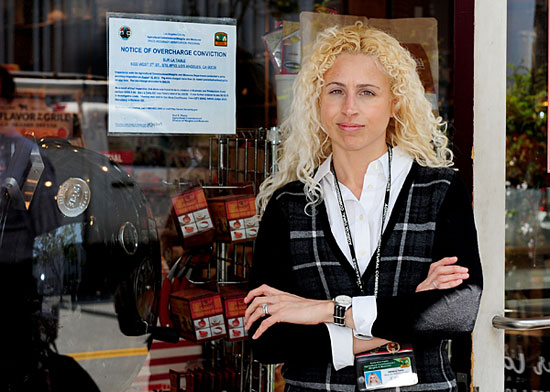
“Buyer Beware” supervisor Katherine Takata outside a Sur La Table store at The Grove that overcharged.
“Men’s Shorts Now $49.50.” The sign at the J. Crew was clear. But when the knee-length summer pants were rung up last year on a Tuesday morning, the scanner read $64.50.
It was a costly mistake—for the merchant. The “shopper” was an inspector from the county’s “Buyer Beware” program, and the $15 error, along with a mistake in the store’s favor on a pair of T-shirts, added up to a misdemeanor. Now, more than $3,200 in fines and investigative costs later, Mother’s Day bargain hunters will find a different eye-catching sign in that J. Crew, in Glendale’s Americana at Brand shopping center.
“Notice of Overcharge Conviction,” it says.
Signed by the county’s Agricultural Commissioner/Director of Weights and Measures, the 8½-by-11-inch notices have quietly become a part of L.A.’s shopping landscape in the decade since the county first began mandating their display.
Today, the county has 16 full-time inspectors working on price verification, funded by some $2 million a year in fees, says Deputy Sealer of Weights and Measures Katherine Takata, who oversees the program. Inspectors have found overcharges everywhere from supermarkets and drug stores to the handbag department of the Beverly Hills Neiman Marcus, where, in late 2011, scanners were caught charging $990 for a Prada handbag that was supposed to be on sale for $910.
Some inspectors visit retailers as anonymous shoppers or respond to consumer complaints; others show up unannounced and conduct annual spot checks.
Diplomacy also is part of the job for the inspectors, who, like traffic cops, never know what they’ll encounter.
“People cry,” Takata says. “People get angry. We’ve had people try to hug us if they pass the inspection. Someone fainted once when the inspector identified herself. Another time, an inspector asked a store manager in the Beverly Center for an ID and the man excused himself and came back a half-hour later, all sweaty—he’d run all the way back to his house to get it.”
The job does have its entertaining moments.
“We’ve had celebrity sightings,” she says. “We’ve been in store parking lots during shootings. One of our inspectors was at a Victoria’s Secret once, checking prices, and one of the clerks asked him if he wanted a changing room.” Two inspectors once foiled a robbery at a Rite-Aid by blocking the exits, she says, and several undercover inspectors have themselves been mistaken for shoplifters.
When the inspections pay off, however, they can yield serious victories for consumers. Early this year, for instance, the legwork of L.A. County inspectors helped win a multi-county, $875,370 ruling against Best Buy. As part of the settlement, the retailer has to give California customers a $3 discount if they discover any more erroneous charges.
“Most overcharges occur because of human error—things like expired price tags not being taken down or updated in the system,” Takata says. “Sometimes it’s just a regularly priced item sitting on their shelf, and you bring it to the cash register and it rings up incorrectly. Sometimes it’s clearance items that haven’t been marked properly in the system.”
Innocent as the errors may be, however—the store manager at the J. Crew cited a computer malfunction when a routine spot check turned up those overcharges—the state holds retailers responsible for the accuracy of their prices. State law forbids merchants to charge more than the lowest price advertised.
Overcharges of less than $1 are infractions, carrying fines of up to $100 per violation, but overcharges of more than $1 can be prosecuted as misdemeanors, with penalties of up to $1,000 per violation.
“It may seem like a small thing,” says Takata. “But for, say, a retiree on a fixed income, even a dollar is significant. And for big companies like Ralph’s or Best Buy, these fines are a drop in the bucket. These overcharges add up. When Macy’s overcharges by dollar for a tie, it isn’t just that one tie and that one dollar. It’s all the people who buy that tie at Macy’s.”
Last year, she says, the program collected nearly $271,000 in fines from misdemeanor prosecutions, nearly $67,000 for investigative costs and nearly $99,000 in civil administrative penalties. At the moment, she says, notices are fluttering from the doorways of about 80 retailers across the county.
Over the years, Takata adds, those signs have been a special source of consternation for some merchants, who complain that they deter business. Because they are specifically written into the county ordinance that created Buyer Beware, however, businesses must display them.
“We try to work with people, but there’s not a lot of wiggle room,” she says.
The county’s overcharge notices, required by law to hang within five feet of a retailer’s front door for 60 days after a conviction, were conceived in an effort to ensure accurate pricing after Supervisor Gloria Molina complained about overcharges at a Macy’s and a Kmart during the 2001 holiday shopping season. At the time, only one full-time inspector had been assigned to monitor pricing accuracy at the more than 10,000 merchants who do business here.
A subsequent investigation found overcharges at two-thirds of 108 retailers sampled around the county, and that spawned the Buyer Beware program, which requires stores to register price scanners and pay a fee that, in turn, underwrites the scanner inspection program. The blue-and-white overcharge notices—variously regarded as something between a restaurant grade and a scarlet letter—were added at the end of a yearlong grace period after the inspections were launched in 2002.
ACWM spokesman Ken Pellman compares the signs to speeding tickets. “The enforcement prevents larger problems and keeps things orderly,” he says. Like speeding tickets, he adds, they have also worked well as a deterrent. Last year, only about 17 percent of the 8,459 retailers inspected were caught overcharging.
Overcharging, he says, “is still unfortunately a common problem, but it’s less common than it used to be.”
Posted 5/9/13
A monthly toll road fee exits early
May 9, 2013
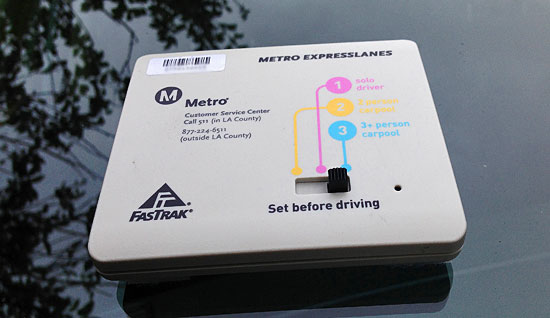
Even infrequent toll road users need a transponder, but they'll no longer pay a monthly maintenance fee.
Metro’s board of directors, taking aim at one component of a controversial ExpressLanes pilot project, voted Thursday to scrap for six months a maintenance fee levied on infrequent users of the toll roads, Los Angeles County’s first.
The board voted 7-4 in favor of a motion by Director and Los Angeles County Supervisor Zev Yaroslavsky to suspend the fees in the interest of fairness. Yaroslavsky’s motion, originally introduced for consideration in January and recently amended, applies to Los Angeles County residents who make four or fewer trips in the ExpressLanes each month. The motion only applies to local residents so that commuters who live in other counties—where monthly charges continue to exist—can’t go bargain-shopping here for their FasTrak transponders.
Everyone who uses the toll roads, which are located on the 110 and 10 freeways, is still required to have a transponder and to pay tolls if they’re traveling solo in the lanes. Carpoolers (two or more on the 110 Freeway, three or more on the 10 Freeway at peak hours) don’t have to pay any tolls but still must have a transponder in their vehicle. Until now, even carpoolers had been subject to the $3 monthly fee if they used the lanes infrequently.
“I think this is an unfair fee,” Yaroslavsky said, adding that he doesn’t believe exempting infrequent L.A. County users will have much of an impact on the program’s bottom line. Still, his motion sets a six-month time limit for the monthly fee exemption, during which Metro’s staff can gather data on how it affects usage of the lanes and the overall cost of operating them.
Stephanie Wiggins, who is managing the program for Metro, said she expects the number of ExpressLanes accounts to increase now that the monthly fee has been removed, drawing in motorists who “to date haven’t opted in because they feel the $3 fee is an impediment.”
Customers can obtain a transponder online, at AAA and Metro offices, as well as at Albertsons and Costco stores. They must then deposit $40 into an account from which toll charges and fees are deducted. (Some discounts are available.)
A Metro report said the agency started assessing the monthly $3 fees on February 24 and had collected a total of $14,175 from 4,725 infrequent users as of March 31. Overall, there were 107,921 accounts in the system in March, of which 27,620 were infrequent users who live in L.A. County.
The fees haven’t been the only issue to emerge since the first ExpressLanes started operating last November. Large numbers of citations have been issued, and while minimum average speeds in the new lanes have easily met or exceeded their 45 mile per hour target, speeds in the general purpose lanes next to them have dropped—which Metro said is to be expected as motorists get used to a new program.
Supervisor and Metro Director Mark Ridley-Thomas argued that it’s premature to “tinker” with the project by dropping the maintenance fee until the pilot period is complete in 10 months.
“It’s simply too soon,” he said. “I don’t know that it warrants intervention at this point.”
He voted against the measure, along with fellow supervisors and directors Michael D. Antonovich and Gloria Molina. Also dissenting was Director John Fasana, a Duarte city councilman.
Wiggins of Metro acknowledged that the agency has received complaints about the fee, but Ridley-Thomas and Molina said their offices had not received any.
Although she voted against changing the fee, Molina signaled she has some other issues with the program, starting with the fact that she had a tough time finding a place to get a transponder. “I seem to have gone to the only Costco that doesn’t have it.”
Logistics can also be a challenge, she added. “On the 10 [Freeway]…people don’t know how to get on it and utilize it, including myself.”
Posted 4/25/13
Hot new workplace accessory: a bike
May 9, 2013
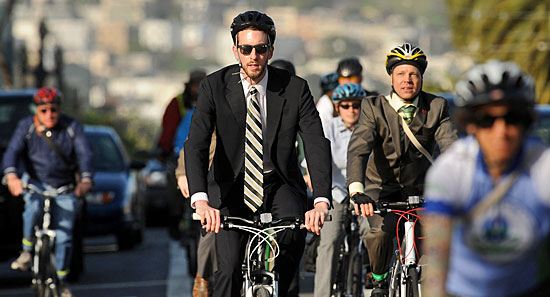
Bike to Work Day is Thursday, but cycling to work is increasingly common on any given day in Los Angeles.
Bike commuting appears to have turned a corner in Los Angeles, with new lanes and a burgeoning youth-oriented bicycle culture tempting more and more workers to saddle up.
“I think we have reached a tipping point,” said Lynne Goldsmith, manager of Metro’s bicycle program.
Next Thursday, May 16, is Bike to Work Day—one part of Bike Week, Metro’s annual celebration of pedal power. Metro and local advocates are expecting thousands of cyclists to participate. They hope some will shift their commuting habits for good.
Goldsmith said the number of trips taken by bicycle in the county, for commuting or otherwise, has doubled since 2010. She believes the change is partly due to economic necessity and partly because cycling has become trendy with the younger generation.
“We don’t think it’s going to go out of style,” Goldsmith said. “I think it’s here to stay.”
Josef Bray-Ali, owner of Flying Pigeon Bikes in Northeast L.A., seconded that notion.
“Fewer young people are getting driver’s licenses,” said Bray-Ali. “We have an economic crisis. A bunch of people may not be able to afford a car, but they can get a bike.”
Bray-Ali said “fixies”—single-gear bikes decked out with bright colors and other design details—have become wildly popular among the younger generation. “They buy fixies to knock around town with friends, but then they get jobs or go to college,” he said. The cycling habit follows them, and eventually they upgrade to higher-end bikes with commuter-friendly features like chain guards and rear-mounted racks.
UCLA’s experience supports this trend. Since 2005, the number of students and employees commuting to campus has tripled, said Dave Karwaski, associate director of transportation for the school. A desire for a healthy lifestyle combined with new infrastructure played a large part in that change, he said. UCLA is already a bronze-level “Bicycle Friendly University,” according to the League of American Bicyclists. Over the next few years, the university intends to make further improvements to get to a silver or even a gold rating.
Experienced bike commuters like Jeff Chapman echo the importance of infrastructure. For him, safety is paramount—he often tows his young children to school by bike. But, as director of the environmentally-conscious Audubon Center of Highland Park, he also appreciates the fact that pedal power is non-polluting.
He said his kids really enjoy the ride, too.
“They are learning directions better and we see cats along the way,” said Chapman. “They’re interacting with the community in a different way than they do in the back of a car.”
Another bike commuter, Cy Eaton, has cycled in lots of cities—New York, San Francisco, Portland, Chicago and Vancouver, to name a few. “In terms of that list, L.A. ranks toward the bottom,” he said. “But that’s a pretty stout list to compete against.” Since moving here, he’s had to upgrade to sturdier tires because flaws in the asphalt were giving him too many flats. He said the surface of most bike lanes in L.A. is “very disappointing.”
Still, Eaton notices a lot of improvement around town. Having previously lived in Los Angeles in 2008, he moved back last year. His current commute takes him 8 miles in each direction between East Hollywood and Burbank. He’s not riding in fear like he used to.
“I was pleasantly surprised with how aware motorists have become of cyclists,” said Eaton, adding that bikes on the road are no longer a “novel occurrence” in L.A.
For its part, Metro is using education to create a safer experience. The agency’s “every lane is a bike lane” campaign aims to inform drivers that bikes have the right to a full lane of roadway in some circumstances. In June, the target audience shifts to the cyclists. Joining forces with the L.A. County Bicycle Coalition and Bike San Gabriel Valley, Metro will use a federal grant to fund 90 three-hour safety lessons, through September. Participants will receive free helmets and bike lights as a bonus.
Metro’s Goldsmith said that, in the future, “the nut we have to crack is businesses. We need to convince businesses that they will grow if they encourage bicycling on their block.”
Just like in the streets, indoor infrastructure like bike lockers and showers is important to getting more people to cycle to work, said Linda Lyles, executive director of Century City Transportation Management Organization.
To draw more newbies out for Bike to Work Day, Metro is sponsoring bicycle pit stops with snacks, water, reflective decals and other giveaways. Those who sign a pledge to bike to work that day will be entered into a prize drawing, and all riders with a bike and a helmet will be able to board Metro and other regional transit providers for free.
Posted 5/9/12
A life-altering advocate
May 2, 2013
No one who knew Dr. Antronette K. Yancey—public health expert, UCLA professor, athlete, author, poet and general force of nature—will be surprised to hear that the first time I met her, she interrupted a meeting so we could all exercise.
This was in 2011, and we were serving together on the First 5 LA Commission. She was already an appointee and I had just been named to the rotating post of chairman. I didn’t know at the time that she was a national leader in the anti-obesity movement, nor did I know we were about to become dear friends. I just knew that her voice was confident, her smile was charismatic and her opinions were as down-to-earth as they were incisive. Also, at 6-foot-2-inches tall, she was pretty imposing.
We were wrapping up a discussion on our search for a new executive director when Toni suggested that we all stop and do some shoulder circles.
“She can’t be serious,” I whispered to one of my colleagues.
“She’s very serious,” came the reply. “She does this at every meeting.” She even had a name for it: “Instant Recess.”
Toni asked if I would join the exercise break, and I demurred. “I took my regular 4 mile jog early this morning,” I said. “I’ve gotten my exercise for the day.”
She politely explained that my run was commendable, but it didn’t make up for the unhealthy impact of sitting in meetings all day. She also politely explained that a sedentary work environment increases the probability of cardiac and other diseases. Besides, she said, “a little exercise break will make you feel better.”
I told her I would pass.
Almost nobody else followed my lead.
They followed hers. Dozens of people—from audience members to county department heads—started swinging their arms, stretching and bending as I slipped into the adjacent room where they kept the snacks. Dr. Yancey just smiled at me as I made my exit. On her face was a look that said: “Just wait, mister—I’ll get you yet.”
This Friday, a memorial at Forest Lawn Hollywood Hills will commemorate the remarkable life of Toni Yancey, who died last week at 55. A non-smoker, she had come down with a chronic dry cough that she had thought to be an allergy; it turned out to be lung cancer. In the days since her death, the many of us who knew, admired and loved her have struggled to make sense of the shocking loss of such an important voice and such a bright light.
Long before she was tapped for the nonprofit board advising First Lady Michelle Obama’s “Let’s Move” campaign, Dr. Yancey was making it her mission to help people counteract the risks of sedentary living. As the county’s first director of chronic disease prevention in the late 1990s, and then as a founding co-director of the UCLA Kaiser Permanente Center for Health Equity, she consistently stressed fitness. As a scholar, she published dozens of papers on chronic disease prevention, obesity and nutrition.
But her secret weapon was that she led by example. Knowing how hard it can be for most people to overcome inertia, she brought her signature exercise breaks to schoolyards, community centers, conferences and public meetings. She made videos featuring members of the Lakers, Sparks and Padres. She did public radio commentaries on the importance of healthy living.
Even after her cancer diagnosis, her work continued. With me, she talked community and basketball—she’d played for Northwestern University’s Division 1 women’s team in college. With others, she found different points of connection: as a mother and a grandmother, as a devoted mate to her partner Darlene Edgley, as an ex-model, a musician or as a published poet.
I will remember her as an inspiration. After that first humbling encounter, I never again skipped an exercise break at the First 5 Commission. Frankly, it made me feel better. I became such a believer that I often get up in long meetings and move around to get my blood circulating.
Last summer, she gave me a copy of her 2010 book, “Instant Recess: Building a Fit Nation 10 Minutes at a Time”. I treasure it. It is the product of years of research that led her to the conclusion that exercise breaks are important to our health and longevity.
Yes, in fact, she did get me. I only wish I had been given more time to work with and learn from her. I will miss her dearly.
Posted 5/2/13
Fatal attraction at the falls
May 2, 2013

Five people have died in the upper reaches of Eaton Canyon in the past two years, including this man in 2011.
It was late in the day when several twentysomething hikers happened upon veteran Los Angeles County rescuer Richard De Leon. Next to him was another young man, whose broken body had just been retrieved from the rocky floor of Eaton Canyon.
“Where you coming from?” De Leon asked the group, knowing all too well the answer.
“The second falls,” they confirmed. “But we’re fine.”
De Leon motioned to the man now being photographed by coroner’s officials. “So was he about an hour ago.”
The hikers assured De Leon they weren’t like that guy. “We know what we’re doing,” they insisted.
“So did he,” the rescuer said, hoping to drive home his point but knowing that he might as well have been lecturing the rocks.
Every day in the mountains above Pasadena, this sense of youthful invincibility collides with a stretch of treacherous terrain that leads to a waterfall tucked into Eaton Canyon. Unlike an easy hike that starts at the county-operated nature center and ends at a lower waterfall, there’s no trail to speak of to reach the upper falls—just an obstacle course of crumbling rock, tree limbs and narrow ridgeline paths with sheer cliffs on both sides.
In just the past two years, five people have fallen to their deaths there, the most at any single site in the county’s sprawling recreational landscape. The most recent, in March, was a 17-year-old Alhambra girl, who was a standout in academics and athletics. Already accepted to Cornell and Massachusetts Institute of Technology, high school senior Esther Suen sustained fatal head injuries after she plunged 200 feet. A teenage companion also fell, but he survived.
Although the problem is not new, De Leon, who is team captain of the Sheriff’s Department’s search and rescue team in Altadena, says the frequency of people being stranded and injured is on the rise because of social media postings that draw inexperienced hikers to the place and the destruction of other Angeles National Forest trails from the massive Station Fire a few years back.
“By the second or third rescue of the day,” De Leon says, he gets frustrated with the risk takers. “I start thinking, ‘Will you people just stop!’ ”
How to get them to do that, however, has turned into a test of competing strategies and wills among the government agencies that share responsibility for the area, including L.A. County and the U.S. Forest Service, which is responsible for the wilderness land that hikers use to reach the second waterfall.
In 2011, a series of multi-jurisdictional meetings were convened that included representatives from Supervisor Michael D. Antonovich’s office, the county’s parks and sheriff’s departments and the Pasadena fire department. From that effort came an online public service announcement featuring four uniformed sheriff and fire officials, who stressed that getting to the second waterfall “isn’t worth losing your life.”
But many at the table had wanted more. Some in the law enforcement contingent wanted to start charging reckless hikers for the substantial costs of rescues. Others suggested fencing off access points. At a minimum, though, most everyone agreed that the forest service should post a strongly worded warning sign where hikers, who’d easily reached the first waterfall, begin the mile-long trek to the second one. That is, most everyone except the forest service.
Ranger Mike McIntyre, who oversees the area, told the group that forest service lawyers wanted no warning signs placed on the agency’s land, in a spot where there’s not even a trail. Doing so, he said, could open the forest service to legal liability; attorneys representing injured hikers might argue that, if agency officials knew there was a risk of injury, then they had an obligation to make the area safer.
Now, in the wake of Suen’s death, the group is headed back to the table, this time with an even greater urgency to push the forest service to act, especially with the busy summer season approaching—or, as the Los Angeles Daily News put it in a recent editorial calling for better signage and more patrols at Eaton, the “dying season.”
Said Sussy Nemer, a senior deputy to Antonovich, whose district includes Eaton Canyon: “We’d like to see all the county agencies and the City of Pasadena work with the forest service to increase the signage near the second waterfall and put in place some kind of physical barrier to prevent hikers from even getting up there.”
Nemer said her office also hopes to recruit the area’s new state and federal elected representatives, “who could serve as allies in our cause.”
Russ Guiney, the director of the Los Angeles County’s Department of Parks and Recreation, said he’s under no illusion that more warning signs or even a fence would end the risky adventurism that’s luring the mostly younger crowds to dangerous heights. But like the county’s warnings signs in the lower canyon, he said, it might stop some in their tracks, which would represent a significant contribution to life and limb.
“I think if I was the forest service, I would want to do more,” Guiney said. “I’d think we had a moral obligation. Certainly, we in the county feel that we have a moral obligation….What people deserve and expect is a fair warning.”
Guiney also said that his office would continue to monitor—and counter—such social media sites as YouTube and Yelp, where people have romanticized the second waterfall and downplayed the dangers.
Forest service ranger McIntyre said in an interview that, at the moment, he doesn’t foresee a shift in strategy from his agency. “We’re doing what our lawyers are telling us to do,” he said.
People mistakenly come to Eaton Canyon thinking it’s an urban park, along the lines of Griffith Park, he said. “But the forest is a wildlands area,” he said. “I’m not saying the forest is dangerous but it comes with inherent risks. We need to make people better prepared, and they need to know their limits.”
Michael Leum, who oversees all of the Sheriff’s Department’s search and rescue teams, says to count him among those who’d like to see the forest service take a more active role in Eaton’s safety issues and not treat them “like Kryptonite.” Since the forest service says it has no trails beyond the first waterfall, Leum said, “they believe there is no need for maintenance or signage, regardless of the fact that hundreds of people go up there.”
Leum said that if he had his way, he’d want the agency to “install safe ingress and egress into the area.”
The status quo, he said, only guarantees this: “People are going to get hurt and killed in that canyon.”
Posted 5/2/13
Thinking big about a weighty issue
May 2, 2013

County employees and their families take the Fitness Challenge to get active and adopt a healthier lifestyle.
The county workforce is expanding—and not in a good way.
When Kaiser, the largest provider of health care to Los Angeles County workers, took a comprehensive look at employees’ vital statistics a few years back, it set off a big wakeup call at the Hall of Administration.
“The numbers were staggering to me,” said Lisa Garrett, the county’s director of personnel.
No wonder. Kaiser found that 76.7% of county employees enrolled in its plan were overweight or obese (compared to the national average of 69.2%.) What’s more, 37.3% had borderline or high cholesterol, 12.3% had high blood pressure and 7.9% were diabetic. Alarmingly, they also seemed to be passing the problem on to their kids, with 40% of enrolled employees’ children weighing in as overweight or obese as well.
“We’ve got to get ahead of it,” Garrett thought. And thus—in a partnership between Human Resources and Parks and Recreation—the Countywide Fitness Challenge was born in 2010.
As the 2013 Challenge rolls out starting this month, Garrett is adding a personal—and very public—dimension to the initiative.
At Tuesday’s Board of Supervisors meeting, she noted the large percentage of overweight county employees and declared: “I have to admit that I’m in that number. But just wait till after this year’s Countywide Fitness Challenge.”
Garrett’s UCLA cheerleading days may be a thing of the past, but she’s not afraid to get a little rah-rah when it comes to promoting fitness. And if that means going public with her intentions, so be it.
“I am coming out to say, ‘I am going to do it and you keep me honest about it,’ ”Garrett said in an interview afterward.
“I would love to get back to my college weight. I used to be a cheerleader in college. I said I’ll never see that uniform again, but I have it hanging in my closet,” she said, laughing.
Beyond that kind of motivation, there’s another powerful force at work.
“In my own family, obesity is an issue,” Garrett said. “I had a sister who had breast cancer and she passed away. My mother’s had cancer, my sister’s had a stroke. And the common thread with all three is that they were obese. So if I’m going to change that from happening to me, I’ve got to watch my weight.”
She already watches what she eats, so “I know the bottom line is going to be getting more active.”
For Garrett, like many employees, that will mean carving out time in a busy schedule.
“My day starts early and I’m here late,” she said. So she’s trying to schedule “walk and talk” late afternoon meetings that can be conducted while moving through Grand Park.
She’s also a big believer in taking advantage of all the free health testing available at Fitness Challenge events, which are held on weekends in all five supervisorial districts and are for employees, families and even pets. (Kickoff events are scheduled for May 18 at Whittier Narrows Recreation Area and May 21 at Grand Park, with other activities scheduled around the county in coming months.)
“For myself, it was at one of these events that I learned that my cholesterol range was going up,” Garrett said.
Free screenings offered include tests for glucose, blood pressure, body mass index and many others, along with fitness activities ranging from extreme boot camp to yoga, from power walking to hula hooping to Zumba.
Then there are the healthy cooking demonstrations.
“People are amazed at how delicious the food is,” Garrett said, recalling a tasty salad she sampled at one such event in Marina del Rey. “It had watermelon, fennel, mint and red onions, and it was absolutely delicious,” she said. “It has become a staple at our house because it is refreshing and healthy.”
In addition, the year-long Challenge features wellness newsletters, health fairs co-sponsored by county departments and labor groups, and the county’s popular Biggest Loser contest.
Amid all the challenges, there are some positive indicators—including the number of employees completing health assessments, in which they learn and begin tracking measurements like weight, blood pressure and cholesterol. The number of employees completing the assessments has gone from 1,502 in 2010 to 15,267 last year.
That kind of knowledge is power when it comes to preventing disease, she said.
“The bottom line is the Fitness Challenge is not a panacea for what ails us, but it will hopefully put the spotlight on the issue and the need to get more healthy as a county community. We could sit back and do nothing, but that’s not acceptable.”
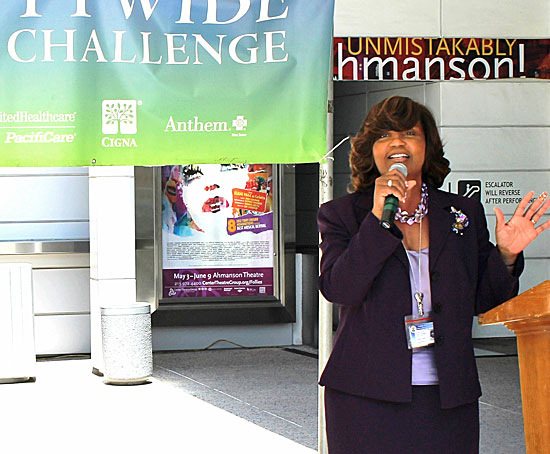
Lisa Garrett, the county's Director of Personnel, is on a mission to raise employees' fitness awareness.
Posted 5/2/13
Sharing a new vision for LACMA
May 2, 2013

"Urban Light" won't be on the only LACMA artwork visible from Wilshire if a new architectural plan is adopted.
An architectural reimagining of the Los Angeles County Museum of Art is being unveiled next month—and transparency, in every sense of the word, is on the table.
Pritzker Prize-winning architect Peter Zumthor, who has been working on the plan with LACMA director Michael Govan, envisions a design that would open the museum up to its surroundings, making it possible for passersby to view works of art, and even traditionally closed-door activities like the installation of exhibitions, without entering the museum.
“Visitors can look out; those outside can look in. From the ground, and in elevation, the museum is mostly transparent,” the Swiss architect said in a statement. Zumthor described his idea for the museum as “an organic shape, like a water lily, floating and open with 360 degrees of glass facing Hancock Park, the La Brea Tar Pits, Wilshire Boulevard, Chris Burden’s Urban Light, and Renzo Piano’s new galleries.”
A model of Zumthor’s proposed design—along with other images from LACMA and its site stretching back to the Pleistocene Era—will be on display at the museum from June 9 through September 15. The exhibition, “The Presence of the Past: Peter Zumthor Reconsiders LACMA,” is part of the modern architecture spinoff of the Getty-funded Pacific Standard Time initiative.
Although the project is in the preliminary stages, museum officials said they hope to engage the public early in a conversation about LACMA’s evolution.
Beyond the aesthetics, one aim of the project is to make the museum completely solar-powered, with energy left over to share.
“A huge roof covered in solar tiles literally soaks up the energy of the California sun,” Zumthor said in his statement. “The building gives more energy back to its neighbors than it takes from the city.”
Creating the new LACMA would mean replacing some of the museum’s existing buildings by William Pereira, which are aging and in need of repair.
The Renzo Piano-designed Broad Contemporary Art Museum and Resnick Pavilion would not be affected, and neither would a new motion picture museum that Piano and Zoltan Pali are designing for the May Co. building on the site.
It’s not the first time the museum has sought to remake itself in recent years. Rem Koolhaas, the Dutch architect, had proposed a similarly ambitious makeover but that project, approved by LACMA’s board in 2001, was tabled before it came to fruition.
Details of the current project under consideration were first reported in the Wall Street Journal and Los Angeles Times.
Posted 5/3/13
Board steps up foster care oversight
May 1, 2013

Supervisors want more frequent and coordinated scrutiny of agencies that place kids in foster and group homes.
Responding to a years-long string of allegations of impropriety within a foster family agency under contract to Los Angeles County, the Board of Supervisors this week moved to tighten oversight of such agencies and to fix communications breakdowns involving departments responsible for auditing them.
The board voted unanimously to approve a motion by Supervisor Mark Ridley-Thomas calling on the Department of Children and Family Services to develop a plan to conduct annual audits of programs at the approximately 129 foster family agencies with county contracts. The board also approved an amendment by Supervisor Zev Yaroslavsky directing the department to include a staffing component it had previously proposed, for six or seven new employees to enable DCFS to undertake a more aggressive oversight approach.
Meanwhile, the county department of the Auditor-Controller, charged with conducting separate financial audits of the foster family agencies, came in for some criticism at the board’s meeting on Tuesday for its handling of a review of Teens Happy Home, the subject of a recent Los Angeles Times article that disclosed allegations of long-running financial irregularities at the agency.
Yaroslavsky said the department, which completed an audit of Teens Happy Home in 2003 and is currently finishing up a second audit started in 2010, failed to brief board staff when it discovered allegations of misappropriation of public funds by the agency.
“Where there are problem agencies out there…we’d like to know so that we don’t step in a pile of dung inadvertently,” Yaroslavsky said. “This is troubling to me.”
Auditor-Controller Wendy Watanabe, who said the Teens Happy Home audit is nearly complete, acknowledged the problem: “We fell short on this one, I’ll admit to that. We did not do a very good job. And I think part of the reason is we wanted to keep the 20 allegations under wraps.”
The Times reported that Teens Happy Home, a private agency that places children in foster and group homes, has continued to receive county contracts even as “questionable financial practices proliferated in recent years” and children it placed in foster homes “suffered abuse and neglect repeatedly.”
Supervisors expressed concern that DCFS and the Auditor-Controller are not communicating well enough with each other—especially when issues of child welfare are concerned.
“There are things that the Auditor-Controller knows that the Department of Children and Family Services does not know and vice versa,” Ridley-Thomas said. “And because of the lack of communication and coordination, we are not holding the entities appropriately accountable.”
Added Supervisor Michael D. Antonovich: “The children can’t afford delays in having these corrections implemented…If a house is on fire, you can’t take two years to study it and make a recommendation in three years on how to put out the fire…This is a life-and-death issue at times that has to be resolved immediately.”
The supervisors directed staff to come back with an oversight plan in 30 days. Philip Browning, the head of DCFS, said his department is committed to making the necessary changes.
“We put safety as a priority for the children in these foster homes,” Browning said in a statement after the supervisors’ meeting. “We will be working more closely with the Auditor-Controller to ensure coordination of our efforts to improve safety of children at the direction of the board.”
Posted 5/1/13





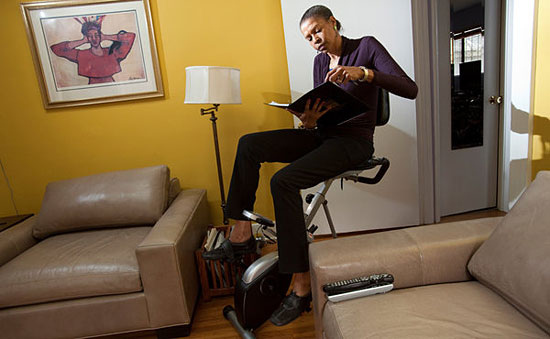
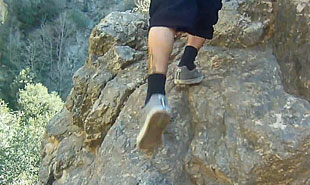






 Check for the latest closure information
Check for the latest closure information








